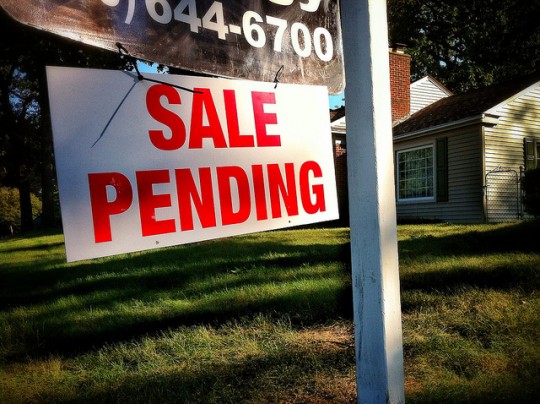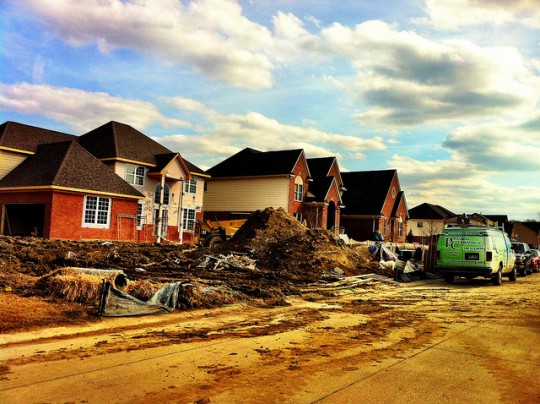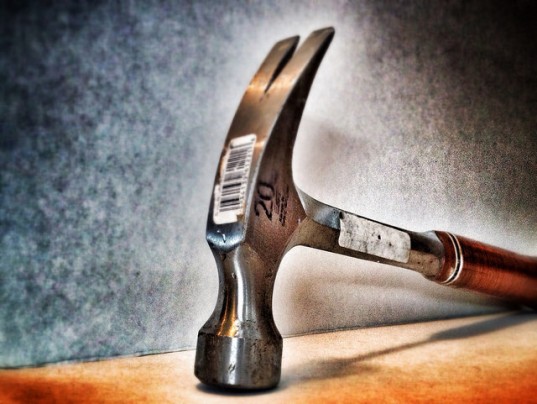The National Association of Realtors’ Pending Home Sales Index measures the number of contracts to buy homes signed each month. The index – which is a good indicator of future sales of previously owned homes – jumped 3.4 percent in March, beating economists’ expectations and providing the first signs of a spring sales spike. Lawrence Yun, NAR’s chief economist, said the gain was inevitable. After a slow winter, buyers had an opportunity to look at homes and are beginning to make offers, Yun said. Regionally, pending sales were up in the Northeast, South, and West, falling only in the Midwest, where they slipped 0.8 percent. Home sales are expected to trend upward this year, as more homes are put up for sale and the economy and job market continue their ongoing recovery. Still, despite the fact that existing-home sales are expected to rise throughout this year and next, total sales in 2014 will likely be lower than they were the year before. The NAR expects total sales to reach 4.9 million this year. In 2013, sales were estimated at nearly 5.1 million. More here.
Tag Archive for economists
Millennials Hold Key To Future Housing Demand
The combination of a growing economy and pent-up demand for housing should boost household formation and home sales, according to a number of economists participating in an event for the National Association of Home Builders. Their forecast for this year and next focuses on how improving economic conditions will spur young Americans, who have been living with their parents or renting, to enter the market and begin buying homes. Maury Harris, managing director and chief U.S. economist at UBS, said people between the age of 25 and 34 will begin to feel better about their economic circumstances as unemployment comes down and credit availability eases. As this happens, Harris believes household formation will pick up and there will be fewer shared households and less doubling up. According to Harris, normal household formations have fallen short by about 2.5 million following the recent recession, in part due to graduating college students moving in with their parents or doubling up in apartments. Naturally, as economic conditions improve for these young adults, they will begin purchasing homes and forming households of their own. More here.
New Home Sales Slide In March
Sales of newly built single-family homes fell 14.5 percent in March from February’s rate, according to estimates released by the U.S. Census Bureau and the Department of Housing and Urban Development. The decline was more than economists expected and put new home sales 13.3 percent below last year’s level. Winter weather has been blamed for much of the sales slowdown seen throughout the early months of 2014 but, according to the report, sales fell in the West and rose in the Northeast, indicating the disappointing March numbers aren’t just due to harsh weather. Still, sales estimates for December through February have since been revised upward and the sales pace over the past year is much improved from where it was in 2011 and 2012. In short, sales of new homes – just like the overall economy and housing market – have been recovering slowly ever since the financial crisis and recent recession. Analysts expect sales to continue that recovery and pick up as the year goes on. More here.
New Home Construction Up In March
New estimates released by the U.S. Census Bureau and the Department of Housing and Urban Development show new residential construction increased in March. Privately owned housing starts rose 2.8 percent overall and construction of new single-family homes was up 6 percent from the month before. After a rocky winter, the improvement is a welcome sign but the gains were still less than economists had forecast for the month. Also in the report, permits to build new homes fell, though the decline was mostly due to a drop in authorizations to build multi-family housing. Single-family authorizations – which are a good indicator of future home building activity – were up 0.5 percent. Overall, new residential construction was at its fastest pace of the year in March. March also marked the second consecutive month in which construction of single-family homes increased, after falling in both December and January. More here.
New Home Sales Fall In February
Sales of new single-family homes fell 3.3 percent in February, according to estimates released by the U.S. Census Bureau and the Department of Housing and Urban Development. With the drop, new home sales are now 1.1 percent below year-before levels. February’s decline was bigger than economists expected but matches recent economic and housing data showing slumping consumer confidence and slower sales and construction activity this winter. Harsh weather has been blamed for much of the downturn and February’s 32.4 percent sales plunge in the Northeast supports that theory. On the other hand, sales also fell in the South and West, where weather was less of a factor. Still, the housing market is expected to rebound as the weather warms and the sales season begins. The median sales price of new homes sold in February was $261,800; the average price was $317,500. At the current sales rate, there was a 5.2-month supply of new homes for sale at the end of the month. More here.
New Home Sales Hit 5 ½ Year High
Sales of new single-family houses surged to a five-and-a-half year high in January, jumping 9.6 percent from an upwardly revised December estimate. The sales spike was welcome news after harsh winter weather led to the slowing of a number of economic indicators during the month. It was also unexpected. Surveyed economists forecast a slight dip in sales for the month, expecting them to fall rather than rising to their highest level since July 2008. January sales were 2.2 percent above year-before levels and reached a seasonally adjusted annual rate of 468,000 units. Regionally, new home sales saw double-digit increases in the Northeast, West, and South, while tumbling 17.2 percent in the bitterly cold Midwest. The median sales price of new houses sold in January was $260,100; the average price was $322,800. Also, there was a 4.7-month supply of new homes available for sale at the end of month. More here.
Economists Forecast Solid Year For Housing
Following a year of significant improvement in the housing market, four prominent economists are forecasting a solid 2014, according to a yearly survey from RealtyTrac. Mark Zandi, chief economist at Moody’s Analytics, believes this year should be a good one for the economy, as long as government gridlock doesn’t interfere with the progress. Zandi feels that if policymakers do no harm in 2014, the economy should do well and home prices should rise about 5 percent. The National Association of Realtors’ Lawrence Yun also expressed concern over federal policies, warning that regulations focused on lowering default risk may, in fact, restrict access to credit and impede the mortgage market. On the other hand, Chris Thornberg, principal at Beacon Economics, sees continued improvement in the housing market’s future. According to Thornberg, new home sales should be up this year and – though existing-home sales will remain around the same level as last year – there will be less investor activity and more retail buyers. Other economists cautioned that there is still room for improvement in the economy and housing market. Jed Kolko, chief economist at Trulia, is concerned that, while prices and sales volumes are now near normal levels, a shaky labor market means fewer young adults are moving out on their own and forming households. More here.







